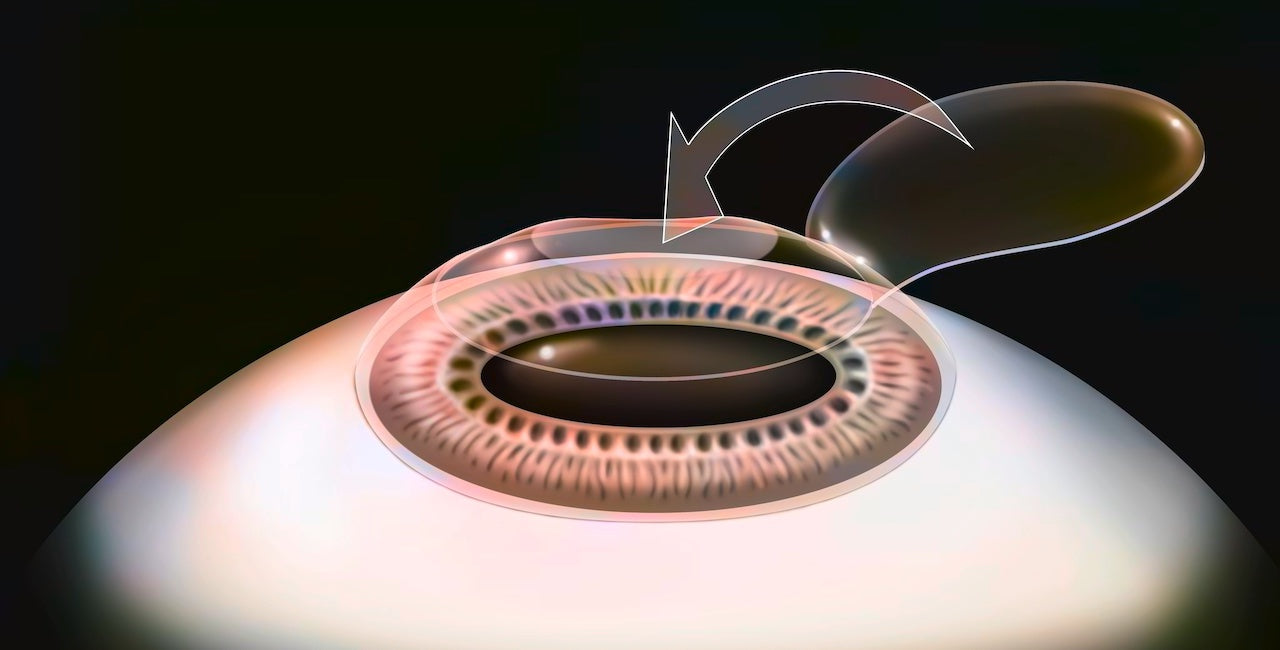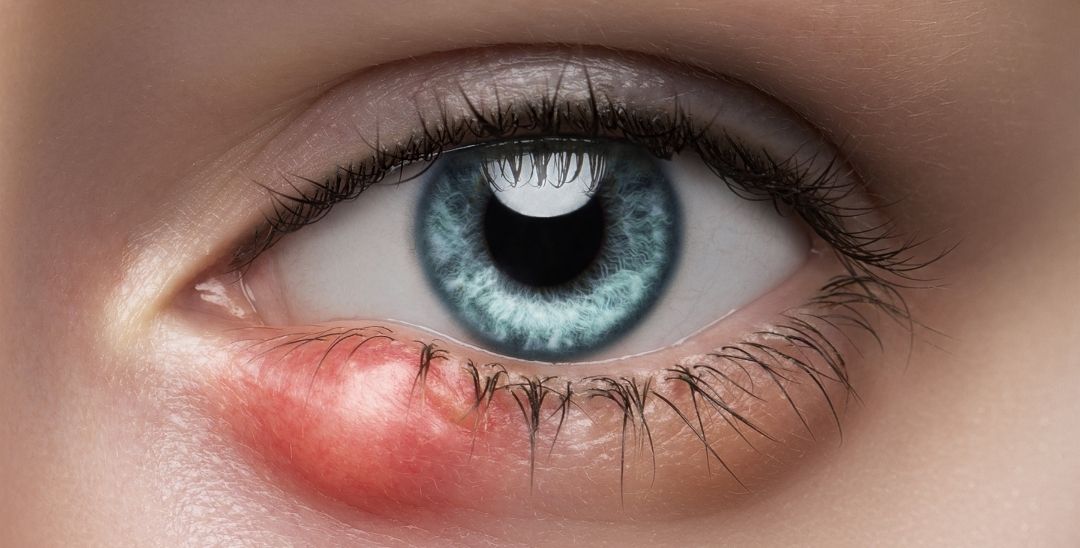Imagine waking up in the morning, stretching, and realizing you can see the world around you without reaching for your glasses or contact lenses. This is the dream that LASIK (Laser-Assisted in Situ Keratomileusis) surgery has made a reality for countless individuals. LASIK is an effective procedure to correct vision problems, but as with any medical procedure, has potential risks and complications.
One of the most common and bothersome LASIK complications¹ is dry eye disease. Dry eye affects 8.7% to 30.1%² of adults in the United States, with a higher prevalence in older adults and women. Whether you’re already experiencing dry eye symptoms as a result of LASIK or not, it’s essential to understand the potential risks and how to manage them.
What Is LASIK Eye Surgery?
LASIK is a refractive surgery to correct vision problems and involves using an excimer laser to change the shape of the cornea to improve how light enters the eye. The laser removes a small amount of tissue from the cornea, making it flatter for those with nearsightedness or steeper for those with farsightedness. LASIK has become increasingly popular because of its high success rate and minimal discomfort during recovery. Notably, over 95%³ of patients report satisfaction with the procedure.
What Is Dry Eye Disease?
Dry Eye Disease occurs when tear quality is poor, or your eyes don’t produce enough tears. This causes the eyes to become dry, inflamed, and irritated. Clinically speaking, there are two types⁴ of dry eye disease — aqueous deficiency and evaporative dry eye, although many people experience a combination of both.
- Aqueous Deficiency, which accounts for only 10% of dry eye disease, results from a lack of tear production from the lacrimal glands. It’s common in people with Sjögren’s syndrome.
- Evaporative Dry Eye occurs when tears evaporate too quickly due to an imbalance in the composition of the lipid layer on the eye’s surface. Meibomian gland dysfunction (MGD) can be the root cause of this, affecting over 85% of individuals diagnosed with dry eye disease.
To learn more about Dry Eye Disease, be sure to read Dry Eye: Symptoms, Causes and Treatment.
Why Does Dry Eye Happen After LASIK Eye Surgery?
Tears are essential for maintaining clear vision, comfort, and overall eye health.
LASIK, while highly effective in reshaping the cornea to correct vision, can sometimes disrupt the balance of tear production and drainage, leading to dry eye symptoms. A 2018 study⁶ reported that up to 50% of patients experienced dry eye symptoms in the first week after LASIK, while up to 40% experienced dry eye symptoms in the first month.
Six months post-LASIK, 20 to 40% of patients reported symptoms. The duration and severity of symptoms after laser surgery varies from person to person. A small minority of patients may experience chronic dry eye symptoms up to a year or longer following the surgical procedure.
The exact cause of dry eye associated with LASIK is unknown. However, researchers believe that the loss of corneal innervation caused by flap-making may be a major cause, affecting the corneal-lacrimal gland, corneal-blinking, and blinking-meibomian gland reflexes, resulting in decreased aqueous and lipid tear secretion and mucin expression.
However, mechanisms other than corneal denervation may also be involved in the development of post-LASIK dry eye. One hypothesis is that changes in corneal curvature and smoothness may alter the friction between the cornea and lid, resulting in tear film instability. Alternatively, the pressure exerted by the patient interface of the femtosecond laser may damage conjunctival goblet cells and reduce mucin secretion.
What Are the Clinical Signs of Post-LASIK Dry Eye?
The clinical signs of post-operative dry eye include decreased Schirmer tear test (STT) scores, positive vital staining of the eye’s surface, and reduced tear breakup time (TBUT).
Here are more details about each sign:
- An STT score below 10 mm within five minutes indicates decreased tear production, which can contribute to dry eye symptoms.
- Vital staining is a test that involves applying a dye to the eye’s surface, and its absorption indicates damage to cells caused by dryness.
- Reduced TBUT means the tear film breaks up faster than it should, leading to dry spots on the cornea.
These signs are important for ophthalmologists to look for during post-operative follow-up appointments. Identifying these signs helps determine the appropriate course of treatment for managing post-LASIK dry eye.
Is Laser Eye Surgery Safe for Patients with Preexisting Dry Eye?
LASIK is an effective and safe laser eye surgery option for patients living with dry eye. However, having preexisting dry eye increases the risk of developing severe post-LASIK dry eye, which can lead to:
- Increased vital staining of the eye’s surface
- More intense symptoms
- Reduced tear function
Sometimes, an eye surgeon or ophthalmologist may recommend alternative procedures less likely to cause or exacerbate symptoms. These may include implantable contact lenses or SMILE (small incision lenticule extraction).
How to Treat Dry Eye after LASIK Surgery
Based on a 2020 report⁷, around 30% of the population experiences DES, with up to 50% of those individuals not receiving sufficient treatment. Knowing how to treat and manage symptoms after laser eye surgery is important. Consult with an eye surgeon or ophthalmologist, who can recommend various treatments to alleviate symptoms and promote healing.
Treatments
Several options are available for treating dry eye after LASIK, depending on the severity of symptoms and individual needs.
For options of dry eye treatment options to discuss with your physician, read our other post on Dry Eye: Symptoms, Causes and Treatment.
Get a Clear View on Dry Eye Post-LASIK
LASIK has given countless individuals the gift of clear vision, but there are potential risks. One is dry eye — a common complication that can cause discomfort and impact vision. That’s why it’s essential to understand the symptoms and risk factors for this condition so you can take proactive steps to prevent or treat it if necessary.
If you’re considering LASIK, discuss any concerns about dry eye with your health care provider. If you’re already experiencing symptoms after laser eye surgery, don’t hesitate to reach out for help and explore the available treatment options.
With education and proper management, you can enjoy the benefits of LASIK surgery without the discomfort of dry eye.
Contributors

Justin Mendelson
Serial entrepreneur and product development expert, Justin Mendelson has lived with severe dry eye for nearly two decades. When he was at his worst, he used rewetting drops every 20 minutes and wasn’t sleeping longer than an hour at a time without waking up in excruciating eye pain. After many years of struggle, Justin made a commitment to himself and to the millions of people that suffer from eye disease to develop better products for eye health and chronic dry eye relief.
References
- Post-LASIK dry eye disease: A comprehensive review of management and current treatment options
- Systemic Conditions Associated with Severity of Dry Eye Signs and Symptoms in the Dry Eye Assessment and Management Study
- What Is LASIK Eye Surgery?
- Dry eye disease: when to treat and when to refer - PMC
- https://helloblinkjoy.com/blogs/articles/dry-eye-symptoms-causes-and-treatment
- Dry Eye After LASIK | IOVS
- Dry Eye Disease: Early Recognition with Guidance on Management and Treatment for Primary Care Family Physicians | Ophthalmology and Therapy
- Post-LASIK dry eye disease: A comprehensive review of management and current treatment options
- Contact lenses for the treatment of ocular surface diseases
- Bandage Contact Lens Application Reduces Fibrotic Wound Healing of Flap Margins after FS-LASIK: A Prospective Randomized Clinical Trial
- The effect of nerve growth factor on corneal nerve regeneration and dry eye after LASIK
- Intense Pulse Light for Treating Post-LASIK Refractory Dry Eye
- Dry Eye Post-Laser-Assisted In Situ Keratomileusis: Major Review and Latest Updates - PMC
- Post laser-assisted in-situ keratomileusis dry eye disease and temporary punctal plugs
- Management of post-LASIK dry eye: a multicenter randomized comparison | OPTH





